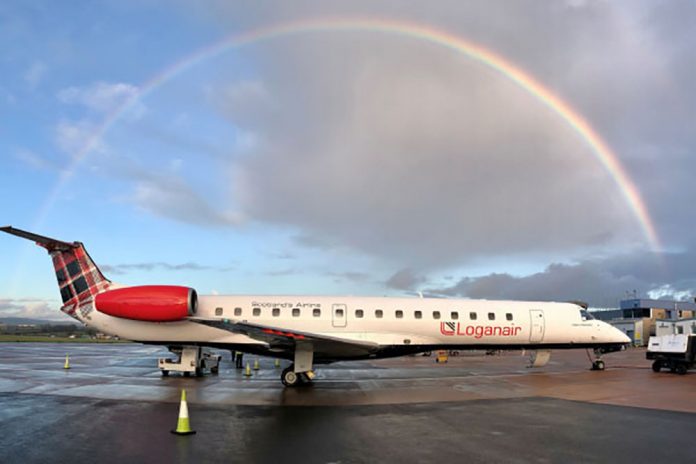Loganair has taken the next step on its journey to reduce the environmental impact of flying through a groundbreaking partnership with the Met Office and FLYHT Aerospace.
The UK’s largest regional airline has joined forces with the national weather service and aviation hardware specialists FLYHT in a project that aims to improve the accuracy of weather forecasts and reduce flight emissions.
The innovative partnership is the first of its kind on this scale in the UK and will see all 13 Loganair Embraer 145s fitted with cutting-edge FLYHT-WVSS-II atmospheric water vapour sensors to measure weather data for the Met Office.
The sensors will routinely monitor environmental conditions around the aircraft during flight and provide a network of unprecedented scale for gathering invaluable meteorological information via Loganair’s Embraer fleet, which flies three to four times daily across the airline’s unique UK routes.
One of the key benefits of this initiative is its potential to increase understanding of the non-CO2* effects of aviation, which are estimated to contribute to around 48% of the environmental impact of flying.
Loganair chief executive Jonathan Hinkles said: “Loganair is resolutely committed to achieving Net Zero emissions by 2040 and this partnership signifies our dedication to confronting the environmental challenges posed by aviation head-on.
“Rather than evading the issue, we are taking the lead in pioneering solutions. We’ve taken great strides already through carbon-offsetting and our GreenSkies initiative. However, this partnership will take our efforts to the next level, helping us to understand and tackle the non-CO2 effects of flying, which account for almost half of aviation’s environmental impact.
“It’s a first-of-its-kind initiative of this scale in the United Kingdom, setting a new standard for comprehensive weather data collection.
“As the project progresses, we anticipate groundbreaking insights into weather patterns, contrail formation, and their cumulative effects on the environment. Equipped with this knowledge, Loganair is poised to drive further transformative change within the industry and continue to set an example for sustainable aviation practices that others can follow.”
The readings provided will help the Met Office to better predict extreme weather events, such as the Cumbrian storms of 2015, as well as improve local forecasting of conditions such as thunderstorms, fog, and showers.
Adverse weather presents one of the biggest challenges for aircraft operations and can disrupt flights as well as ground-crew operations.
Better weather observations will greatly improve weather-based flight planning and real-time updates, enabling more efficient avoidance of severe weather and turbulence. This initiative will also help airlines understand the formation and potential reduction of contrails, which have been identified as a sustainability goal within the airline industry.
Met Office Associate Director of Technical Services, Bruce Truscott, said: “I am delighted to be working with FLYHT and Loganair to further improve our ability to observe and forecast the weather.
“Humidity measurements from aircraft will provide a much-valued addition to our observations capability, helping us to better define the three-dimensional structure of the atmosphere which in turn is expected to support improvements in forecast accuracy.”
Murray Skelton, FLYHT’s VP Business Development and Weather, added: “Having these two leaders as partners validates our weather technology and our growing suite of actionable intelligence solutions.
“We look forward to installing our FLYHT-WVSS-ll hardware on Loganair’s aircraft over the coming months and to providing end-to-end program project maintenance and support for this innovative program.”
*Aircraft engines emit gases including nitrous oxides (NOx), sulfur dioxide (SO2) and water (H2O) – and particulate matter (soot). When emitted at high altitudes, these emissions affect atmospheric physical and chemical properties.






